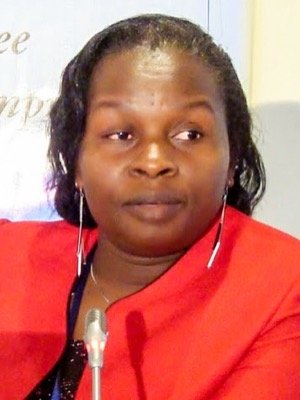Why are girls and women under-represented in science related fields in Africa?
February 11 is the International Day of Women and Girls in Science
The International Day of Women and Girls in Science promotes the full and equal participation of women and girls in education, training, employment and decision-making processes in science fields. Girls and women need to play a significant role in development, and this means getting more of them into science, technology, engineering and mathematics (STEM) studies and jobs.
This is the second blog post in a series of collaborations between ADEA and the Global Partnership for Education (GPE)
The International Day of Women and Girls in Science promotes the full and equal participation of women and girls in education, training, employment and decision-making processes in science fields.
In the spirit of Agenda 2030 for Sustainable Development and Africa’s Agenda 2063, girls and women need to play a significant role in development, and this includes getting more of them into science, technology, engineering and mathematics (STEM) studies and jobs.
The need to integrate gender responsiveness in science, mathematics and technology education is informed by various research findings and reports by the National Council for Science and Technology (NCST, 2010; Report on situational analysis, 2013; Forum for African Women in Education (FAWE, 2005).
Girls perform lower than boys in math and science
Over the past 15 years, the global community has made a lot of effort in inspiring and engaging women and girls in science. The concern is that they are still under-represented in STEM related fields while they represent more than half the population in Africa.
Girls’ performance in primary and secondary mathematics and science subjects has been a debate for at least two and half decades in Africa. Recent studies revealed that gender disparities still persist, reiterating the need to ensure quality education for girls in order to help them perform well (Smith, 2008).
A case in point is the lack of role models for girls in secondary education where female teachers are fewer than male teachers. For instance in Kenya, out of the top 100 best performing students only 17 were girls, mostly from high-cost national secondary schools (KNEC Reports, 2014). This state of affairs worsens as we go down to low-cost district secondary schools.
Teachers’ role in perpetuating or changing gender norms
Other studies have revealed issues of teachers’ negative attitudes and poor approaches to teaching that are insensitive to girls’ needs, and didactic approaches that failed to relate concepts to real life.
Indeed in some countries mathematics and science teachers predominantly use teacher-centred and knowledge-based teaching methods. These approaches tend to discourage a majority of girls who would prefer learning concepts that they can apply in their daily life.
Teaching quality has a significant impact on academic access, retention and performance, (FAWE, 2005) of both boys and girls. A number of issues explain why girls are under-represented in mathematics and science fields. These include deductive against exploratory approaches to teaching; failure or little effort to contextualize the concepts learnt by use of examples or illustrations from real life; inadequate interest and curiosity raised among learners; little interactions in lessons as opposed to preferred 21st century learner-centered practices; un-approachable and distant teachers. All these explain to a large extent why most girls shy away from these subjects or perform dismally.
We appreciate that girls’ and boys’ cultural or social orientation play a role in their career decision making. But in the same way one un-learns certain practices so it should be with traditional gender roles.
Putting teacher development at the center of change
This is realizable through a continuous teacher development process because teachers are also the products of gender norms. The attitude of students is more or less a reflection of teachers’ attitude to mathematics and science subjects.
In view of the foregoing, teacher professional development programs need to focus on developing teacher competencies to employ participatory teaching and learning methods that are more appealing to the girl learner namely: role play, demonstration, discovery, discussion and experimentation.
How do girls want to learn science and mathematics?

STEM education is concerned with developing adequate mathematical and scientific foundations in students to competently function in the 21st century workplace. STEM education helps develop thinking and reasoning processes while students work in teams on exploratory tasks and creativity.
Girls are drawn to textures and colors, they thrive in friendly and dialogue rich environments; they value context and appreciate more holistic approaches to learn. They tend to enjoy cooperative work and are attracted to science that they see as socially relevant.
In light of this observation, great STEM lessons are those that focus on discussing real world issues, immerse learners in hands-on experiments and open-ended investigative activities.
STEM education was launched in Kenya in 2016 and a number of girls’ schools have taken part. This experience showed the ease with which girls responded to STEM education. In one school they applied STEM knowledge to address garbage and environmental issues. They transformed waste paper into ladies accessories such as bracelets and necklaces. Other girls also used recycled materials to create innovative teaching and learning resources, for instance human body parts in biology.
Teachers are the change agents who hold the key to increased enrollment of girls in STEM subjects as well as their choice of careers in related fields.
Gender equality and the empowerment of women and girls will make a crucial contribution to economic development of the world, and STEM education has a role to play.
********************************
Find this blog on GPE website






